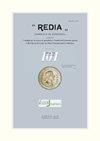PREVALENCE AND DISTRIBUTION OF DIFFERENT NATURAL ENEMIES IN THE HARLEQUIN LADYBIRD HARMONIA AXYRIDIS (COLEOPTERA COCCINELLIDAE)
IF 0.6
4区 生物学
Q3 ZOOLOGY
引用次数: 0
Abstract
The harlequin ladybird Harmonia axyridis (Coleoptera: Coccinellidae) is one of the most common invasive alien species in the world, which has a global impact on biodiversity and agriculture, and causes economic loss and harm to humans. This insect can be infected by different natural enemies, but their interactions remain understudied. In the present study, 581 adult Ha. axyridis specimens were collected from 21 localities in Hungary with the help of citizen scientists and examined for natural enemies. The parasitic nematode Parasitylenchus bifurcatus (Nematoda: Allantonematidae) is reported in Hungary on the harlequin ladybird for the first time. The ladybirds were also infected by the ectoparasitic fungus Hesperomyces virescens (Ascomycota: Laboulbeniales) and parasitoid Dinocampus coccinellae (Hymenoptera: Braconidae). The nematode parasite was present in all localities where Hesperomyces-infected ladybirds appeared. The prevalence of recorded natural enemies varied by locality: for P. bifurcatus it ranged from 1% to 8%; for He. virescens from 2% to 36%; and for the parasitoid it was 4%. Besides, a statistically significant positive correlation was shown between the nematode and the fungus co-infection using Spearman’s correlation. A study on the multiparasitism of harlequin ladybirds was not yet performed in Hungary. The study area is located between two distant areas in Europe where co-infections had already been observed, indicating that this is probably not a sporadic phenomenon, but that parasitism of the harlequin ladybird by multiple natural enemies might be prevalent throughout the area.异色瓢虫(鞘翅目瓢虫科)不同天敌的流行及分布
丑角瓢虫Harmonia axyridis(鞘翅目:瓢虫科)是世界上最常见的入侵外来物种之一,对生物多样性和农业产生了全球影响,并对人类造成经济损失和危害。这种昆虫可以被不同的天敌感染,但它们之间的相互作用还没有得到充分的研究。在本研究中,581名成年Ha。在公民科学家的帮助下,从匈牙利21个地方采集了异吡啶虫标本,并对其天敌进行了检查。在匈牙利首次报道了叉状寄生线虫Parasitylenchus biculus(线虫目:Allantonermidae)在丑角瓢虫身上的寄生线虫。瓢虫也被外寄生真菌Hesperomyces virescens(子囊菌门:Laboulbeniales)和寄生蜂Dinocus coccinelae(膜翅目:茧蜂科)感染。线虫寄生虫存在于所有出现Hespermyces感染瓢虫的地方。记录在案的天敌的流行率因地区而异:分叉假单胞菌的流行率在1%至8%之间;为何。绿脓杆菌占2%至36%;寄生蜂为4%。此外,使用Spearman相关性,线虫和真菌共感染之间显示出统计学上显著的正相关性。匈牙利尚未对丑角瓢虫的多寄生性进行研究。该研究区域位于欧洲两个遥远的地区之间,在这两个地区已经观察到了共同感染,这表明这可能不是一种偶发现象,但多种天敌对丑角瓢虫的寄生可能在整个地区普遍存在。
本文章由计算机程序翻译,如有差异,请以英文原文为准。
求助全文
约1分钟内获得全文
求助全文
来源期刊

Redia-Giornale Di Zoologia
ZOOLOGY-
CiteScore
1.20
自引率
20.00%
发文量
18
审稿时长
>12 weeks
期刊介绍:
Redia supports its long history of basic and applied research in entomology and invertebrate zoology in the field of crop and forest tree protection responding at the same time to the increasing need of innovation and technological improvement.
 求助内容:
求助内容: 应助结果提醒方式:
应助结果提醒方式:


